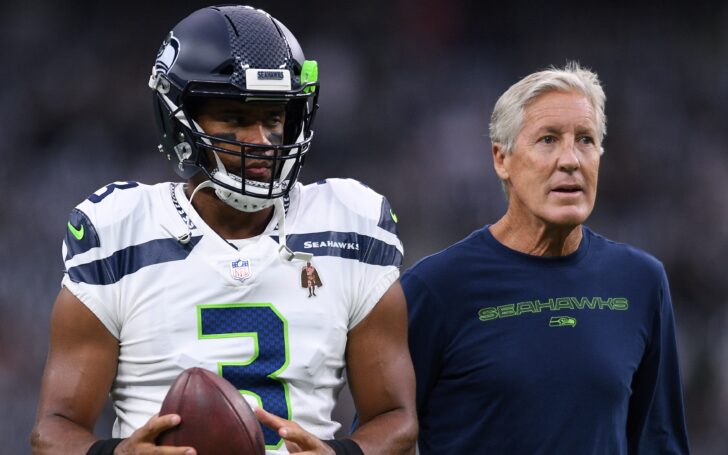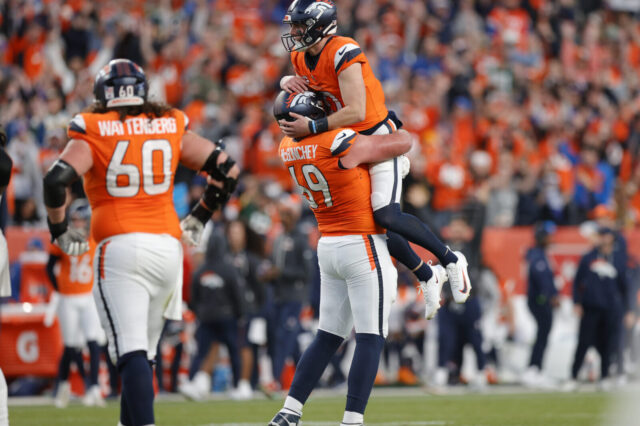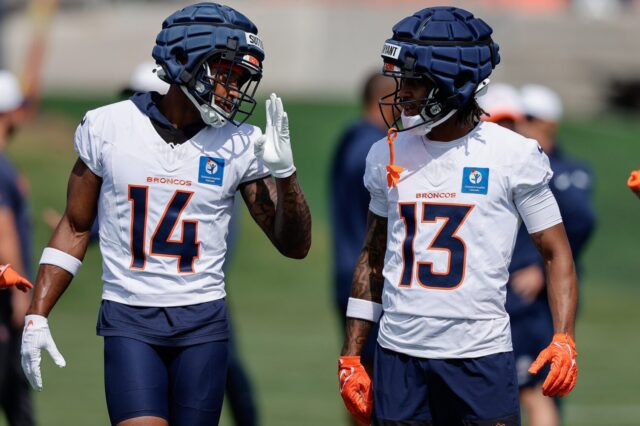It’s been an amazing few days around Denver.
One could say, the spirits are a Mile High in the City, following the beloved Broncos trading for superstar quarterback Russell Wilson. The move made Denver immediate Super Bowl contenders because the quarterback-desperate team now arguably has the best QB in the AFC West.
But, how did it all happen? After 10 years of success in Seattle, why did Wilson want to be traded away now?
Thanks to some wonderful reporting by Michael-Shawn Dugar, Jayson Jenks and Mike Sando of the Athletic, the divide between head coach Pete Carroll and his quarterback apparently began with a 2018 playoff loss to the Dallas Cowboys.
Great reporting here.
No surprise to see the 2018 playoff debacle in Dallas cited as one of the reasons behind the Wilson-Carroll rift https://t.co/QTIxO5gPPT pic.twitter.com/fJmD0MJH0h
— Computer Cowboy (@benbbaldwin) March 9, 2022
After looking at the stats from that year, it’s clear the Seahawks did lean too heavily on the run game, especially with one of the best quarterbacks in the league. It paid off in 2,560 rushing yards, which was best in the NFL that year, but Seattle also ran the ball 107 more times than they threw it that season.
The Seahawks, with Brian Schottenheimer as offensive coordinator, continued to lean on the run game in 2019 before finding more balance in 2020. Then, for only the second time in his career, Wilson and Seattle didn’t make the playoffs in 2021, going 7-10 overall.
And here’s even more evidence they ran it too often:
Remarkable stat. @DangeRussWilson was a 9-time Pro Bowler in that conservative #Seahawks offense. Can you imagine what he will be able to do with a coach/scheme that removes the training wheels? Can’t wait for this season! #Broncos https://t.co/20qSwDgKXp pic.twitter.com/pXTMqm8d5t
— Ryan Edwards (@redwardsradio) March 10, 2022
Something must be said for Wilson’s silence on his dissatisfaction of the way the offense was being called. Instead of other stars like Aaron Rodgers, who complain of being canceled while being interviewed and constantly seek the spotlight, Wilson handled his situation much differently. That screams “team player,” which is only a benefit to Denver.
And at only 33 years old, he could have stayed in Seattle and gone through a rebuild. Plus, he had Tyler Lockett and DK Metcalf, two talented receiving weapons. But, apparently, enough was enough and it was time to move on.
Denver’s thankful it worked out the way it did, certainly.
For George Paton, the move sets him up for seemingly many years in his current role. The first year as Denver’s GM we’ve seen him make smart free agency signings, enjoy the best draft of 2021, get back valuable draft picks for Von Miller and now pull off arguably the biggest trade in the history of the NFL.
Paton is on fire!
But he still has a lot of work to do. The Broncos need a new starting tight end after sending Noah Fant away as part of the deal, as well as multiple interior defensive linemen (goodbye, Shelby Harris). Paton has to find another edge rusher, likely re-sign Josey Jewell and decide on Alexander Johnson in the middle, and then fill the strong safety spot, too.
Luckily, thanks to saving money against the cap last year, the Broncos still have $26.005 million to work with, even after the Wilson trade.
While the whole of Colorado is still riding the high of landing Wilson, the ride isn’t over yet this offseason. Paton is in the middle of shaping the team in his image, and looking to get one of the marquee NFL franchises back into contention.



